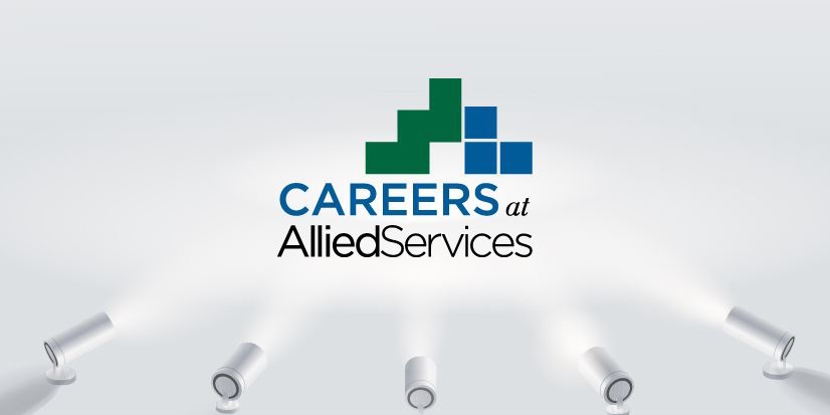Beating the Odds. Taking Steps to Prevent a Second Stroke
- Category: News, Stroke Recovery
- Posted On:
- Written By: Allied Services Integrated Health

You may have already beaten the odds if you or a loved one has survived a stroke. Unfortunately, stroke is the fifth leading cause of death in the United States. According to the Centers for Disease Control and Prevention (CDC), each year in the United States, 795,000 people have a stroke. However, of that number, 23 percent will experience a second stroke.
A 2007 study in the Journal of the American Medical Association Internal Medicine reported that transient ischemic attack (TIA) is associated with a high early risk of stroke, as high as 17 percent within the first 90 days after a stroke. The risk of a second stroke is elevated for all types of stroke, including ischemic strokes, where a blood clot blocks blood flow to the brain, and hemorrhagic strokes, where an artery in the brain breaks open. A 2011 study in the American Heart Association Journal, Stroke, reports that it is estimated from a global meta-analysis in 2011 that 11% of individuals will have a recurrence within a year of their first stroke and 26% within five years.
These statistics are a sobering reminder that surviving a stroke is only the first step to rebuilding your life following a stroke. Stroke recovery can be a lifelong process with the need for ongoing medical management and physical rehabilitation. Additionally, stroke patients must take action to manage the risks of another stroke. Here, however, the statistics are encouraging. According to the American Heart Association, 80 percent of recurrent strokes can be prevented by lifestyle changes.
8 Steps to Reduce Your Stroke Risk
These 8 steps work together to improve overall health and reduce the risk of another stroke.
1. Monitor your blood pressure. High blood pressure is a significant risk factor for stroke. Work with your healthcare provider to bring your blood pressure down if needed. Adjustments to diet and exercise and quitting smoking will improve your vascular health.
2. Control your cholesterol. Medication and diet can help to bring your cholesterol to the goal level.
3. Learn about controlling blood sugar. High blood sugar damages blood vessels over time, making clots more likely to form inside them. Some people have diabetes that is only revealed after a stroke. Learn more about your blood sugar and how to control it.
4. Exercise more. Exercise is an independent stroke reducer that positively impacts weight and blood pressure. Work with your healthcare provider to find safe and suitable exercises for you.
5. Lose weight. If you are overweight, losing as little as 10 lbs can impact your stroke risk.
6 Quit Smoking. Smoking thickens your blood and increases the amount of plaque buildup in the arteries, accelerating clot formation and increasing stroke risk. If you smoke, talk to your healthcare provider about support with quitting.
7. Moderate or eliminate alcohol: If you drink alcohol, do it in moderation to reduce the impact on overall health.
8. Treat atrial fibrillation: Atrial fibrillation is a form of irregular heartbeat that causes clots to form in the heart. Work with your healthcare provider if you have atrial fibrillation.
A new recommendation of the “2021 Guideline for the Prevention of Stroke in Patients With Stroke and Transient Ischemic Attack” is for healthcare professionals to perform diagnostic evaluations to determine the cause of the first stroke or TIA within 48 hours of symptom onset. Throughout your stroke recovery, it is critical to work closely with your healthcare provider and rehabilitation team to tailor your care to your unique needs, risks, and goals.
For example, while physical activity is recommended for stroke survivors, many may have anxiety and practical concerns about being more active. A physiatrist can help identify ways to increase your physical activity safely, taking into consideration any mobility, vision, or balance issues. To find more resources for stroke prevention visit stroke.org/oneisenough
Michael D. Wolk, MD, is the Medical Director of Allied Services Rehab Hospital and the Medical Director of the Stroke Rehabilitation Team. Dr. Wolk is certified by the American Board of Physical Medicine and Rehabilitation and by the American Board of Independent Medical Examiners.
Stroke Recovery at Allied Services
Our inpatient and outpatient stroke rehab programs address physical, cognitive, behavioral, and socialization needs as well as identify and manage risk factors to help prevent future strokes. To learn more:
- Scranton: 570-348-1360
- Wilkes-Barre: 570-826-3900
- Learn about stroke recovery here



